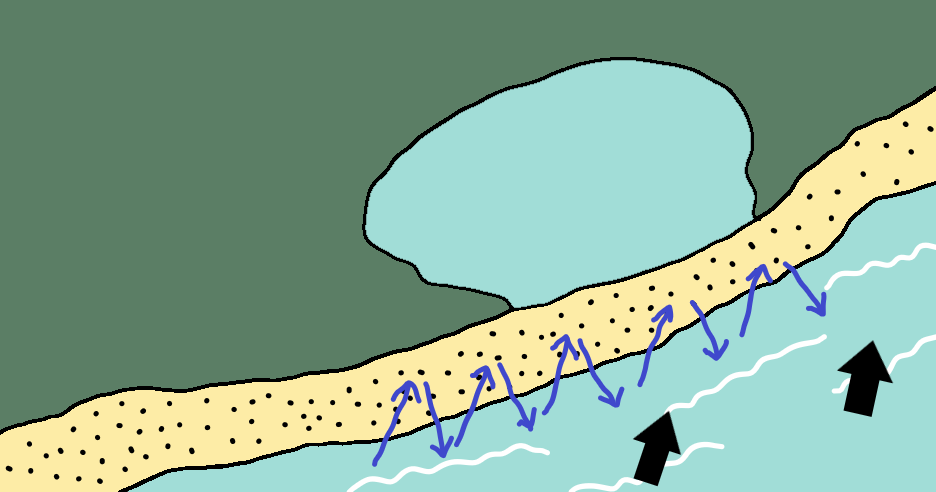The coast is the land along a sea. The boundary of a coast, where land meets water, is called the coastline. Coastlines are created by waves, tides and currents eroding at the land, leaving deposits of sediment, like sand, rocks and animal matter. Coasts differ based on the strength of waves and types of rock that form the land. Coastal changes can take hundreds of years, but for some areas, coastal erosion is having a very present impact. Coastal erosion itself relies on the rock type, it’s hardiness, and the strength and position of the waves. Coastlines therefore can have different shapes and formations.
Wave Types and Characteristics
Waves are the movement of water within the ocean, usually on the surface. When the wind blows, it creates waves, and the Earth’s orbit can also affect the time and motion of waves. The size and energy of the wave depends on certain factors, the strength of the wind, how far the wave has travelled (fetch) and how long the wind has been blowing for. Generally, the longer the fetch the larger the wave, and the faster the wind speed the larger the wave, which is why storms have an impact on wave velocity and size.
There are two different types of wave – constructive and destructive. Whereas one would build the coastline, the other erodes away at it. When a wave reaches the shore, the water that rushes up the beach is known as the swash. The water that flows back towards the sea is known as the backwash. The energy of the swash and backwash determine the type of wave.
Destructive Waves
- weak swash and strong backwash which removes sediment
- steep and close together waves
- create steeper beaches as sediment is removed
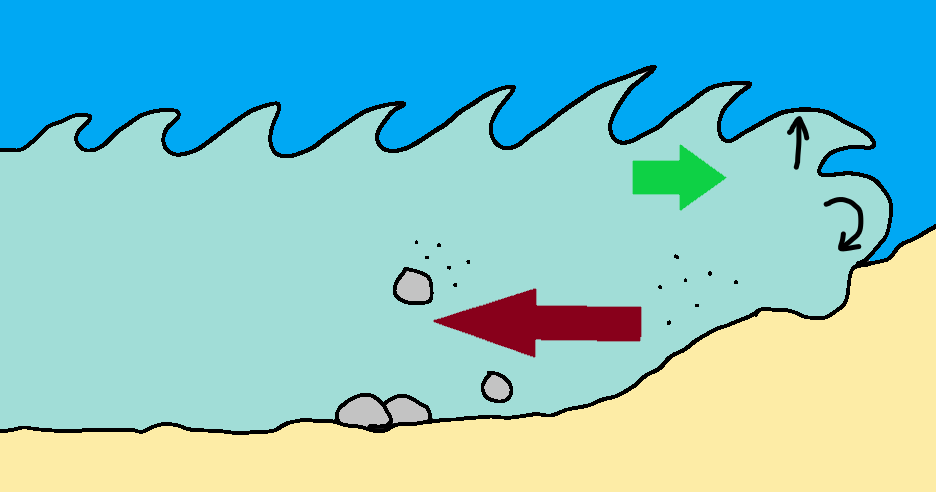
Constructive Waves
- strong swash and weak backwash which adds sediment
- low and further apart waves
- create gentler sloping beaches
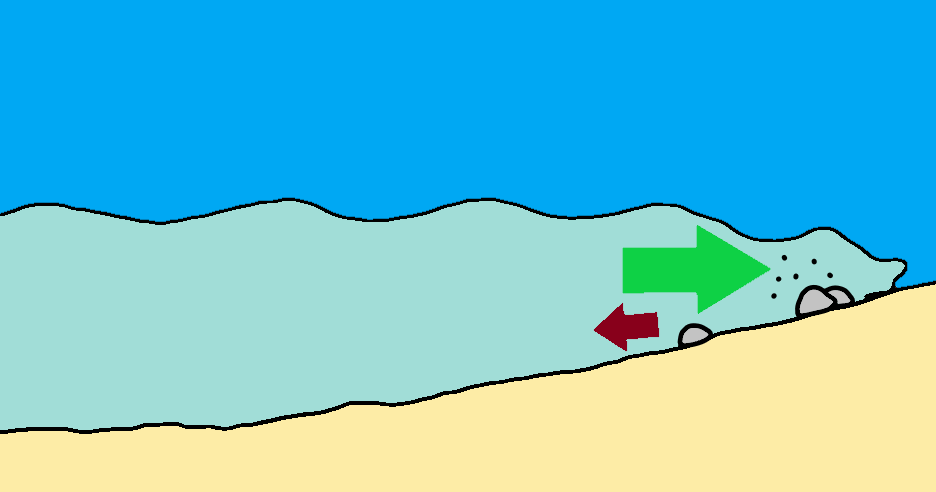
Types of Weathering
There are different types of weathering that can impact coastlines and their formations.
Freeze-Thaw Weathering
Freeze-thaw weathering occurs when water enters a fracture in a rock, where temperature changes cause the water to expand and contract, affecting the fracture and eventually causing the rock to split. This is particularly acute in porous (holy) or permeable rocks that allow water to pass through them.
Biological Weathering
Biological weathering is when plants or animals burrow or root into rocks, causing them to split or break-down.
Chemical Weathering
Water can carry particles and have varying PH levels and chemical compositions that can affect rock types. The rain and sea can be acidic and this can dissolve rock types, such as chalk or limestone.
Erosion
Erosion can occur on the cliff face, and are typically the result of destructive wave types.
Hydraulic Action
This refers to the process of the force of water. Air becomes trapped in the cracks formed, and combined with expansion and contraction when it is hot or cold, it causes splits.
Abrasion
This refers to when there are rocks that grind together, like sand paper, causing a grating effect. This causes rocks to shrink or smoothen.
Attrition
This relates to the process of rocks hitting each other and splitting. This would cause the rocks to break apart, become smaller and eventually erode overtime and become more rounded.
Solution (also known as Corrosion)
This is when chemicals in the water erode the rocks due to the chemical composition, such as limestone being a softer, erodible rock.
Transportation
Materials are also transported within seas and oceans, and there are four main ways they were transported. These sediments can then be deposited further away or brought to shore.
Solution
Minerals can be dissolved in the water and carried along in a solution. Different conditions would affect how these are deposited.
Suspension
Light sediment and material can be carried along in the water easily.
Saltation
This is when small pebbles and stones are bounced along the river bed, and can lead to further erosion.
Traction
This is when large boulders and rocks are rolled along the river bed.
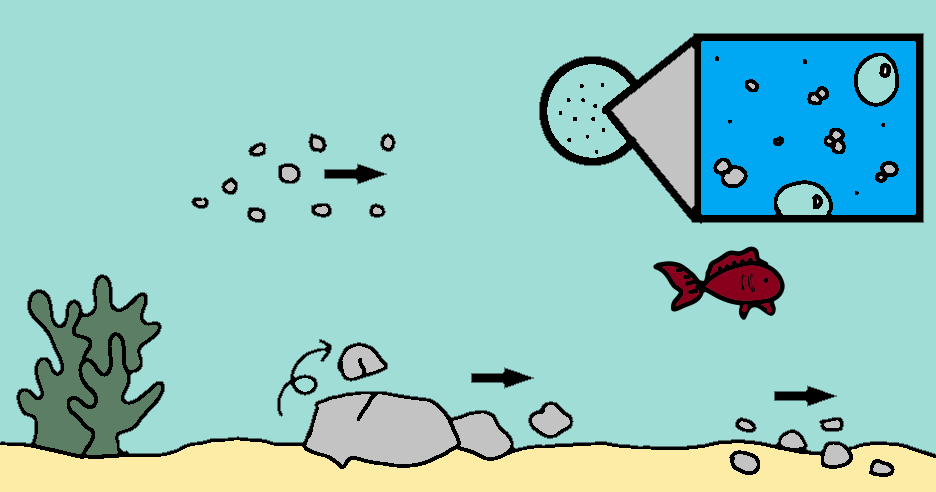
Long-Shore Drift (LSD)
Long-Shore Drift describes the movement of sediment as is carried by the waves along the coastline. Waves approach the coast at an angle because of the direction of prevailing wind. Swash continues to carry the sediment across the coast and backwash takes it back into the sea, and sediment is deposited in a zig-zag movement.
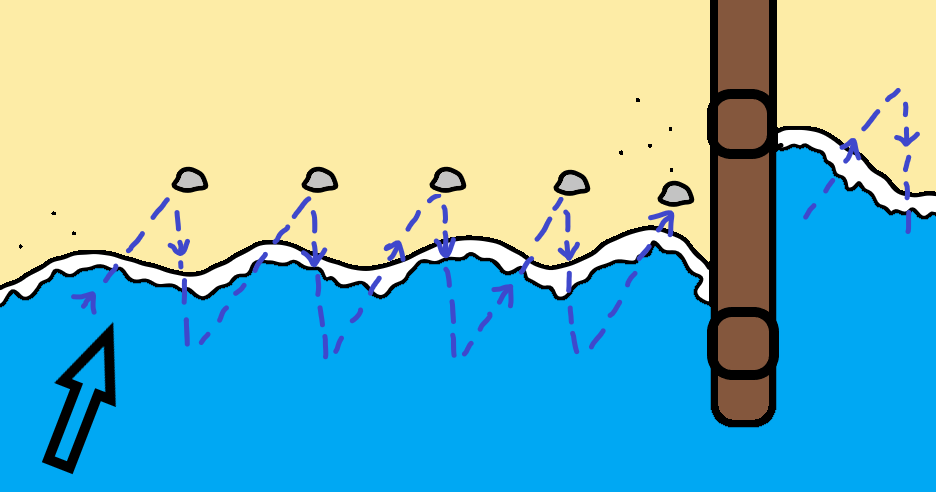
Deposition
Deposition occurs when the sea loses energy and drops the material it has been carrying. This occurs with constructive waves which are gentler and create gradient slope beaches. Reasons for waves to lose their power include:
- Slowing waves and losing energy
- Shallow water
- Sheltered areas
- Little or no wind
Types of Mass Movement
Mass movements, the downward movement of sediments due to gravity, are another factor that can affect coastlines and formations.
Rockfall
Rocks freely fall from a height due to gravity and likely due to weathering breaking them down.
Mudflow
This is simply when saturated soil (soil filled with water) flows down a slope.
Landslide
This is when large rock matter slides down a cliff or hill.
Rotational Slip
This is when saturated soil slumps down, creating a ridge, crevice or step formation. The slip plane is curved in nature.
Waves can create very distinctive landforms which result from different physical processes. Lets examine the different characteristics and land formations resulting from erosion and deposition.
Coastal Landforms
There are different types of formations you would see at the coastline, some a product of constructive or destructive waves.
Erosional Landforms
Headlands and Bays
Rocks erode at different rates, where soft3er rock would erode quicker than hard rock. When a coastline comprises of vertical and various rock types, headlands and bays form. Clay and sand is weaker than say granite. A bay is where the land curves inward, often with a beach where material is deposited. When the softer rocks erodes inwards, it leaves the harder rock to protrude into the sea, forming a headland. The headlands would continue to be eroded away slowly, while also being exposed to weathering and these would concede towards the bay. Wave-cut platforms can arise as headland erode and weather away, retreating closer to the shore. A headlands protrude, they can reduce the power of waves when they reach the bay, meaning beaches can form as constructive waves deposit sediment.
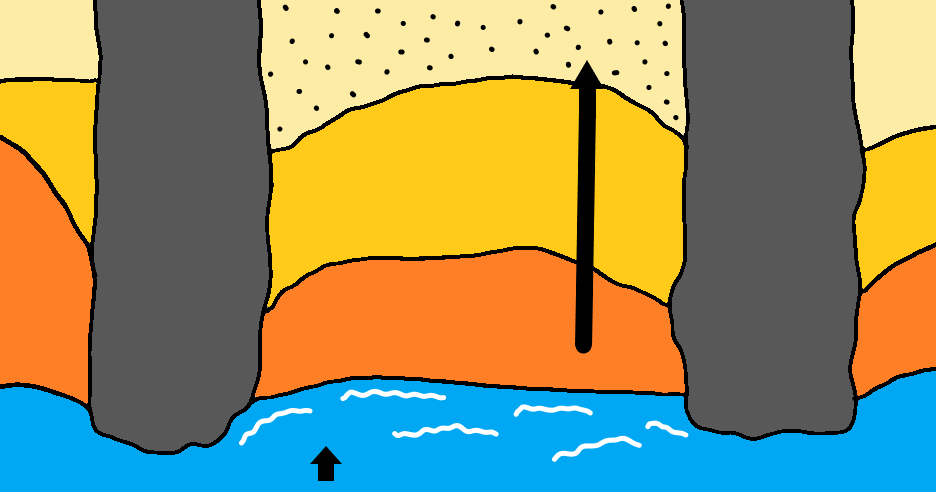

Magwan Porth, Cornwall 
Magwan Porth, Cornwall
Cliffs and Wave-Cut Platforms
Cliffs are shaped through both erosion and weathering processes. Softer rock with generally create more gradual slopes, while more resistant, harder rock will create steep cliffs. As cliff recede, they leave a wave-cut platform which is the legacy of the cliff base and how far it previously extended. Wave-cut platforms would eventually erode away as well.

The sea erodes between the high and low water mark, creating a wave-cut notch and vulnerability in the cliff face. Continuous erosion causes the notch to increase in size until the cliff face becomes unstable and collapses into the sea – the cliff is retreating. The eroded sediment is carried away and wave-cut platform remains where the cliff base used to exist. Weathering also causes the cliff to degrade and recede, also creating vulnerabilities.
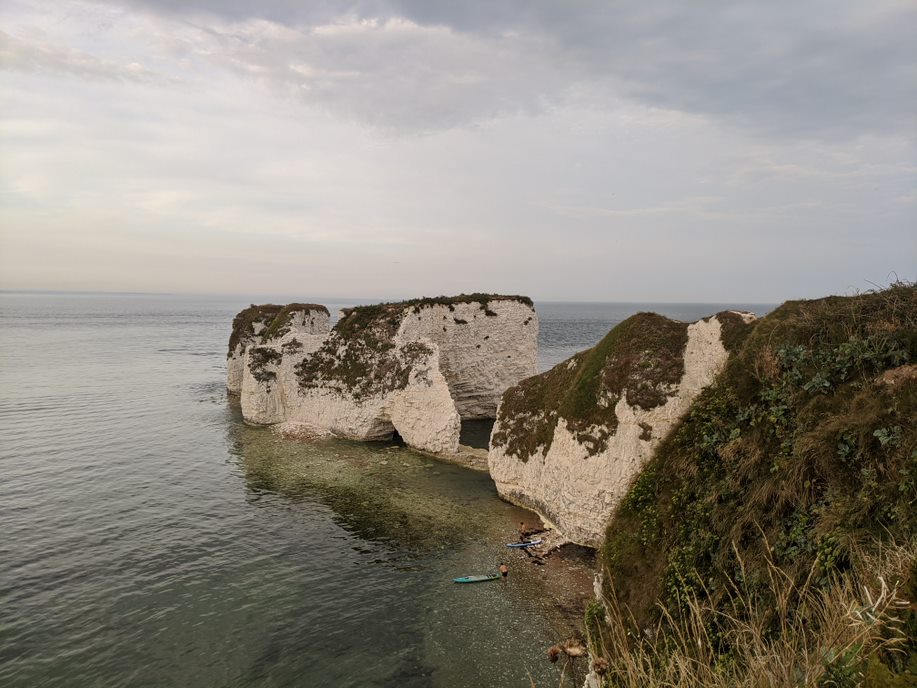
Old Harry, Dorset 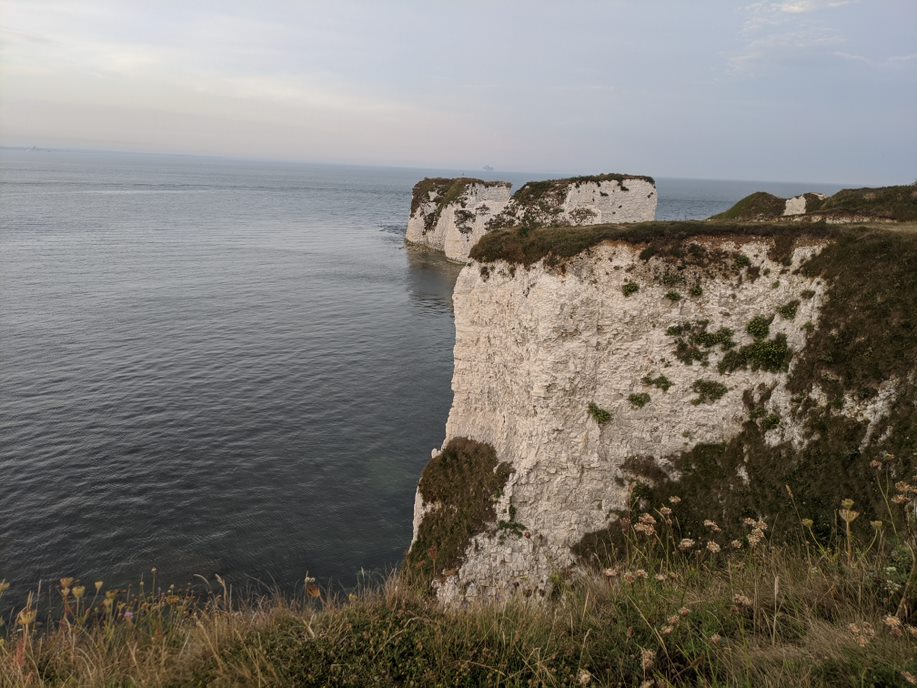
Old Harry, Dorset
Caves, arches, stacks and stumps
Caves, arches, stacks and stumps are erosional features that are commonly found on cliffs and headlands. They are formed from initial cracks and vulnerabilities in the headland – and can again be due to geology. Cracks and vulnerabilities are widened due to erosion and weathering, and these eventually become a cave. Continuous erosion and weathering widens the caves, until it breaks through and forms an arch. The arch widens and soon the top becomes too heavy, and collapses into the sea, becoming a stack. The stack then withstands further weathering and erosion to then form a stump.
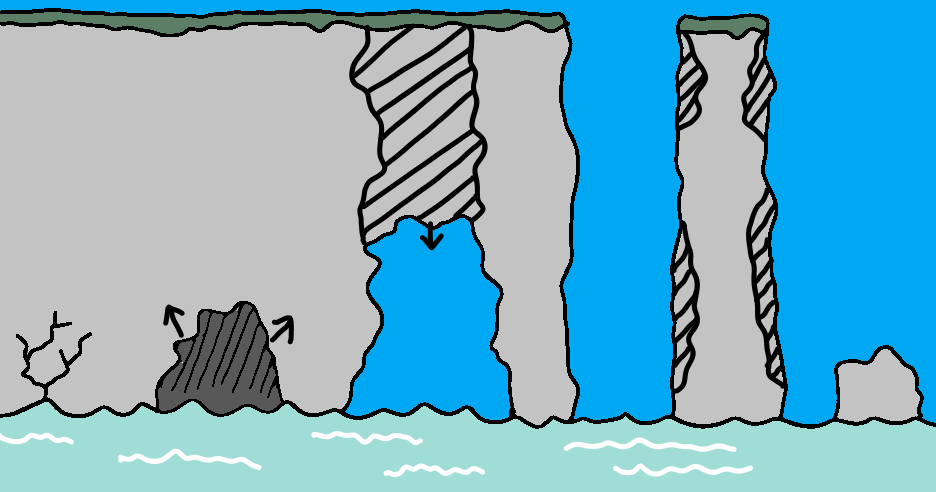
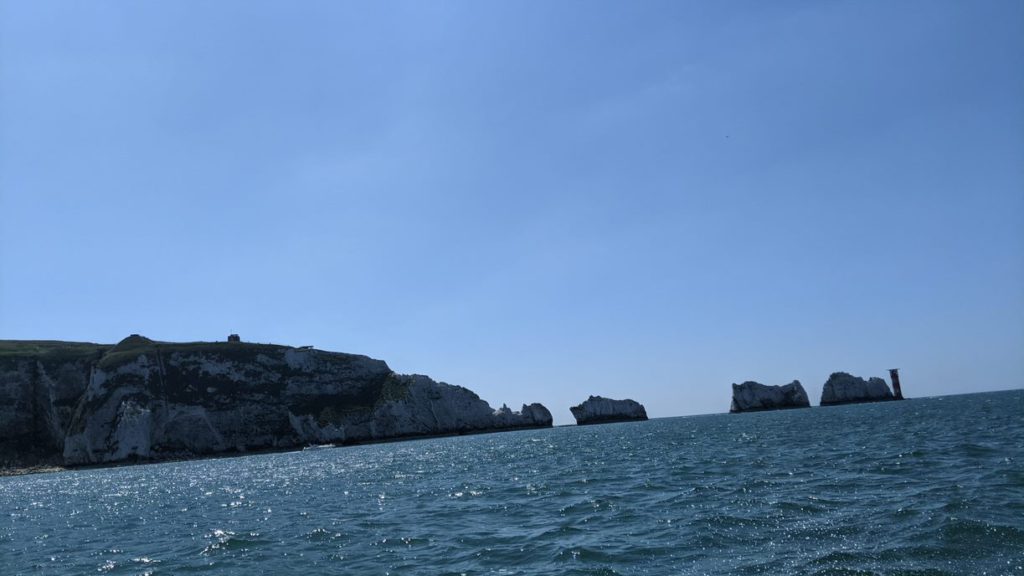
The Needles 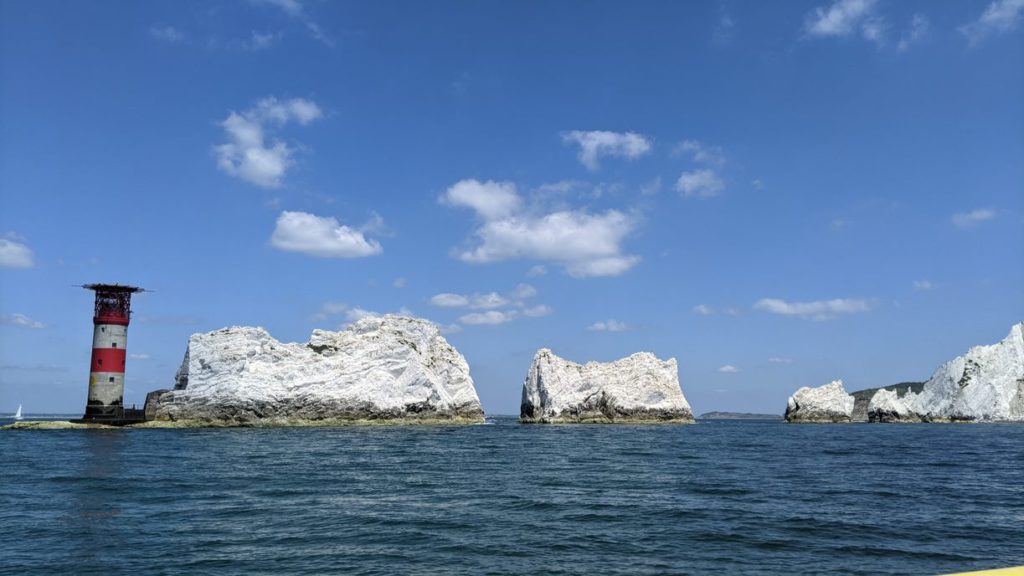
The Needles
Depositional Landforms
When water loses its energy, any sediment it is carrying is deposited. The build-up of deposited sediment can form different features along the coast.
Beaches
Beaches are made up from eroded material that has been transported from elsewhere and then deposited by the sea. They are formed by constructive waves, that often have limited energy or where the wind is less strong, perhaps due to sheltering. The beach type is determined by the local material, though some material can be carried in from afar. Sandy beaches will usually be found in bays, as bay rock is softer like sandstone. Shingle and pebble beaches will arise from headland material, which is formed of hardier rock, and where there may be high energy waves.
Beach profiles help form a better idea of the tides and rock types. Ridges are called berms, and they show high tides and storm tides. Sandy beaches tend to have gradual slopes, while shingle beaches are steeper. Larger material tends to be deposited at the top of the beach, when waves have the most power during high tide, while smaller material can be found nearer the shore as the waves break and lose power.
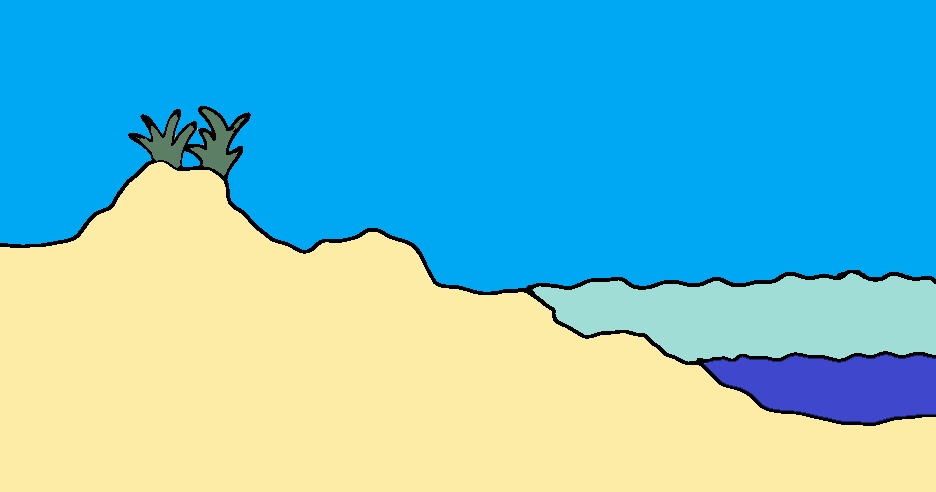
Spits
A spit is an extended stretch of sand or shingle which protrudes into the sea, and typically occur when there is a change in the shape of landscape or near the mouth of a river where conflicting water flows change power and deposit sediment. Sediment is carried by long-shore drift and when it encounters a change in the landscape or water flows, depositing the sediment and creating a bar of sediment. This is a spit. It can form a hooked ned if there is a change of wind direction or water flow also. As the spit gathers in sediment, it creates a shelter and causes more sediment to deposit behind it. Silts from rivers can build up by spits, and can form salt marshes or mudflats due to the collection of sediment and water.
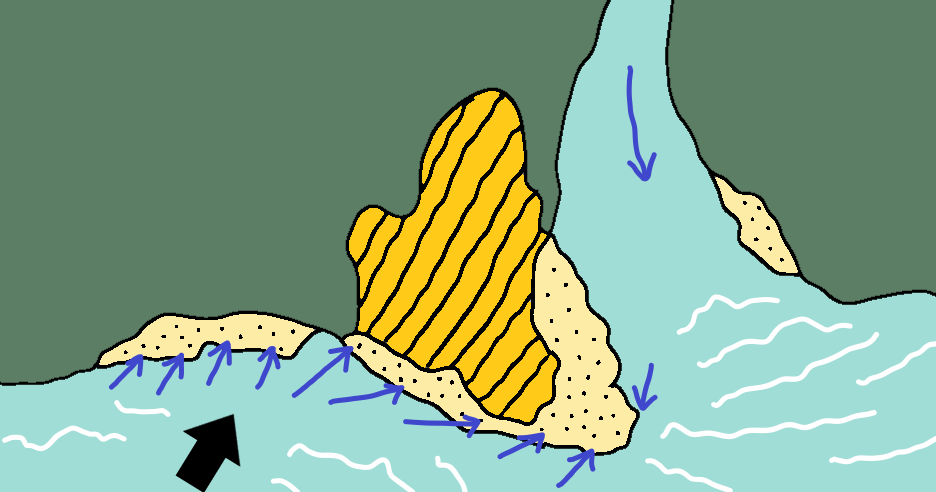
Bars
Sometimes spits can form bars when they grow across a bay and join two headlands. By joining the headlands, it traps some water in the bay, creating shallow lakes called lagoons. Lagoons are not a permanent, they can be lost in strong surges that wash the sediment away or free the trapped water, or they can fill with sediment and the water would disappear.
